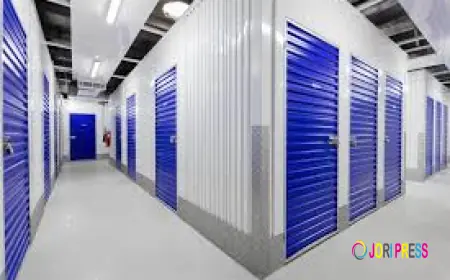What Is Internal Revenue Code 125 and How Does It Benefit Employers?
When it comes to reducing payroll taxes and enhancing employee satisfaction, employers are always seeking strategic opportunities that align compliance with cost efficiency.

When it comes to reducing payroll taxes and enhancing employee satisfaction, employers are always seeking strategic opportunities that align compliance with cost efficiency. One of the most impactful yet often overlooked tools available is Internal Revenue Code 125, more commonly referred to as a Section 125 plan or cafeteria plan. This provision of the tax code offers tangible financial and operational benefits for businesses of all sizes, especially those aiming to provide a competitive benefits package without increasing overhead.
In this blog, we’ll break down what Internal Revenue Code 125 is, how it works, and—most importantly—how it can benefit employers. We’ll also explore what it means when you see Section 125 on W2 forms and why that matters to both your payroll team and your employees.
Understanding Internal Revenue Code 125
Internal Revenue Code 125 was established to allow employees to convert a portion of their taxable salary into non-taxable benefits. This code enables employers to offer a flexible benefits plan, where employees can choose from a menu of pre-tax benefits, such as:
-
Health insurance premiums
-
Dental and vision plans
-
Flexible Spending Accounts (FSAs)
-
Dependent Care Assistance Programs
-
Health Savings Accounts (HSAs), under certain conditions
These elections are made pre-tax, meaning they are deducted from an employee's gross salary before federal income and payroll taxes are applied. For employers, this translates into a reduction in payroll taxes, particularly Social Security and Medicare contributions.
What Makes a Plan a "Section 125" Plan?
To qualify under Internal Revenue Code 125, a plan must meet specific IRS requirements. It must:
-
Offer at least one pre-tax benefit
-
Be in writing (a formal plan document is required)
-
Not discriminate in favor of highly compensated or key employees
-
Provide annual elections, with limited mid-year changes unless there’s a qualifying life event
The term cafeteria plan comes from the concept that employees can "pick and choose" benefits based on their personal needs, much like picking from a menu.
How Employers Benefit from Internal Revenue Code 125
1. Reduced Payroll Taxes
One of the most immediate and measurable benefits to employers is the reduction in payroll taxes. Since employee contributions to Section 125 plans are made pre-tax, the employer doesn’t have to pay FICA (Social Security and Medicare) or FUTA (Federal Unemployment Tax) on those amounts. This can result in thousands of dollars in savings each year, depending on company size and participation.
For example, if an employee elects $3,000 annually in pre-tax benefits, the employer saves approximately $230 in payroll taxes for that employee alone. Multiply this by dozens or hundreds of employees, and the savings become substantial.
2. Enhanced Employee Satisfaction and Retention
Offering a Section 125 plan allows employers to provide greater value to employees without increasing direct compensation. Employees see a reduction in their taxable income, which can increase take-home pay. This flexibility in benefits also helps cater to a diverse workforce, improving morale and loyalty.
Renaissance Advisory has helped many small and mid-sized businesses implement customized Section 125 plans, leading to measurable improvements in employee satisfaction and retention metrics.
3. Greater Flexibility in Benefit Offerings
With a cafeteria plan, you don’t need to force a “one-size-fits-all” benefits package. Whether your employees are young professionals seeking high-deductible health plans with HSAs or working parents needing dependent care support, Section 125 allows for a tailored approach that reflects the needs of your workforce.
Section 125 on W2: What Employers Should Know
Employers must also understand the implications of Section 125 on W2 reporting. While contributions to most benefits under a Section 125 plan are not taxable and thus excluded from Box 1 of the W-2, certain benefits (like group term life insurance over $50,000 or adoption assistance) may still need to be reported in specific boxes on the form.
Accurate W-2 reporting is essential for tax compliance. Misreporting Section 125 contributions can lead to IRS penalties or employee tax filing issues. Renaissance Advisory offers end-to-end guidance on W-2 compliance for employers using cafeteria plans, ensuring accurate classification and reporting.
Common Misconceptions About Internal Revenue Code 125
Despite its clear benefits, several misconceptions prevent some employers from implementing a Section 125 plan:
-
“It’s only for large companies.”
In reality, businesses of all sizes—including startups—can implement a cafeteria plan. The cost of setup and administration is often outweighed by tax savings. -
“It’s complicated to manage.”
With the right advisor, plan documentation and employee communications can be streamlined. Renaissance Advisory provides turnkey Section 125 solutions, including documentation, nondiscrimination testing, and employee enrollment tools. -
“It doesn’t affect my bottom line much.”
Tax savings from reduced FICA obligations alone often cover the cost of plan administration—and then some.
Compliance Considerations
While setting up a Section 125 plan can be beneficial, employers must be mindful of compliance requirements:
-
Maintain a formal written plan document
-
Distribute a Summary Plan Description (SPD) to all eligible employees
-
Perform annual nondiscrimination testing
-
Restrict changes to benefit elections outside of qualifying life events
Failure to meet these requirements could result in the plan losing its tax-favored status, which could create tax liabilities for both employer and employees.
At Renaissance Advisory, we specialize in helping employers navigate these requirements to maintain IRS compliance while maximizing plan effectiveness.
Should Your Business Adopt a Section 125 Plan?
If you’re an employer looking to offer competitive benefits, reduce payroll taxes, and retain top talent, the answer is likely yes. Whether you have five employees or five hundred, a Section 125 plan can be tailored to fit your business’s unique structure and workforce needs.
Renaissance Advisory works closely with employers to assess the financial and cultural impact of implementing a cafeteria plan. We help craft personalized strategies that reduce risk, drive tax savings, and promote workforce satisfaction—all while staying fully compliant with Internal Revenue Code 125.
Final Thoughts
Internal Revenue Code 125 is more than just a tax code—it’s a smart strategy for today’s forward-thinking employers. By understanding how to use Section 125 plans effectively and ensuring compliance with all relevant IRS guidelines, you can transform your benefits program into a true asset for your business.
And when you see Section 125 on W2 forms, it’s not just a line item—it’s a reflection of your commitment to smart tax planning and employee care.
If you’re ready to unlock the benefits of a Section 125 plan, connect with Renaissance Advisory. We’ll help you design, implement, and manage a compliant, efficient plan that delivers real value—for your business and your team.
Need expert help with your Section 125 plan? Contact Renaissance Advisory today to get started with a free consultation.
What's Your Reaction?
 Like
0
Like
0
 Dislike
0
Dislike
0
 Love
0
Love
0
 Funny
0
Funny
0
 Angry
0
Angry
0
 Sad
0
Sad
0
 Wow
0
Wow
0


















































